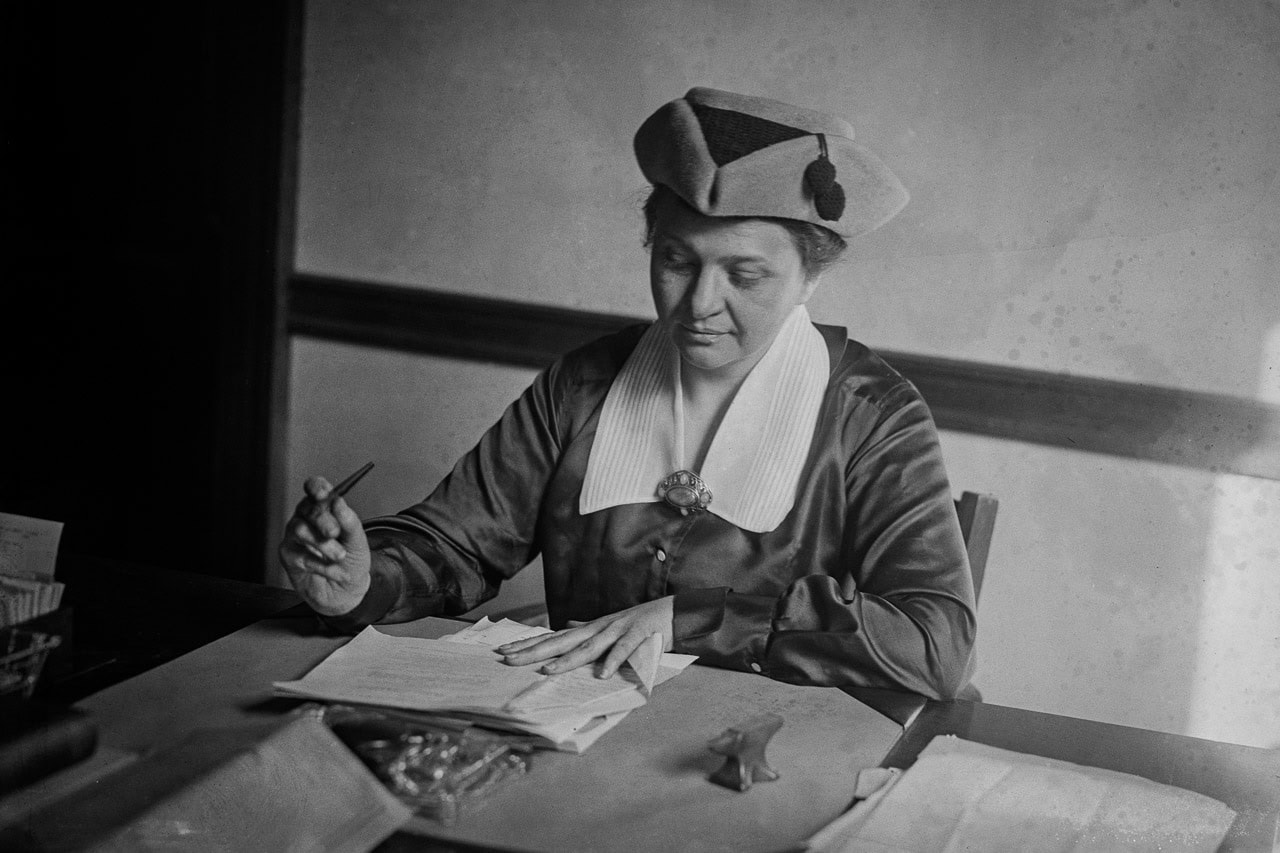President Biden Establishes Frances Perkins National Monument as 433rd National Park Site
President Joe Biden today established the Frances Perkins National Monument in Newcastle, Maine as the 433rd addition to the National Park System at a signing ceremony at the Department of Labor with Secretary of the Interior Deb Haaland, Acting Secretary of Labor Julie Su and leaders of the labor and women’s rights communities.
The new national monument reflects efforts under the President’s Executive Order to strengthen the recognition of women’s history in national parks and historic landmarks across America and honor the legacy and contributions of women and girls to the nation.
President Biden Establishes Frances Perkins National Monument, 433rd National Park Service Site
The Frances Perkins National Monument, designated under the Antiquities Act, recognizes the accomplishments of the first woman to serve in a Presidential Cabinet.
Serving as Secretary of Labor from 1933 to 1945, appointed by President Franklin D. Roosevelt, Perkins engineered sweeping reforms in workers’ rights and labor standards, including the implementation of safety standards, a minimum wage, paid overtime, Social Security benefits, and child labor laws.
In August, Secretary Haaland and Assistant Secretary for Fish and Wildlife and Parks Shannon Estenoz toured the Frances Perkins Homestead and met with community leaders to hear their vision for the care and management of the historic site.

Who Was Frances Perkins?
“Frances Perkins was an incredible trailblazer. I am grateful to President Biden for taking this step to ensure that current and future generations will learn about her body of work,” said Secretary Haaland. “Frances Perkins accepted the position as the first female Cabinet member only after President Franklin D. Roosevelt agreed to support her goals to improve working conditions for all people. She worked tirelessly to see them to fruition, and she set a standard of excellence that is a beacon for all of us who serve. Today, we’re taking a step to ensure that children growing up across America know the name Frances Perkins and understand the impact she has had on our country.”
Born in 1880, Perkins was an advocate, scholar, teacher, wife, mother, suffragist, author and social worker with decades of experience in New York state government as a safety, consumer and workers’ advocate prior to her historic appointment to Roosevelt’s Cabinet, much of it accomplished before women obtained the right to vote in 1920.
Her efforts to champion workers’ rights and ensure safe working conditions in the state served as a model for what she would accomplish on the national level.
During her tenure as the longest-serving Secretary of Labor, Perkins was an instrumental force in Roosevelt’s New Deal policies that aided recovery from the Great Depression. Perkins and Secretary of the Interior Harold Ickes were the only members of Roosevelt’s Cabinet to serve through the duration of his presidency.
Together, they created public works programs that employed millions of people, including the Civilian Conservation Corps.
“American workers are truly indebted to Frances Perkins, a champion of workers’ rights who devoted her life to improving the lives of others,” said National Park Service Director Chuck Sams. “As America’s storytellers and historians, the addition of her home to the National Park System will help us advance our commitment to sharing a fuller and more inclusive account of our nation’s history. I appreciate the Frances Perkins Center for their leadership in preserving her story and partnership with the National Park Service to keep the legacy going.”
Secretary Haaland today also announced five new National Historic Landmarks recognizing women’s history:
- The Charleston Cigar Factory in Charleston, South Carolina;
- The Furies Collective, and Lucy Diggs Slowe and Mary Burrill House, both in Washington, D.C.;
- Azurest South in Petersburg, Virginia; and
- The Peter Hurd and Henriette Wyeth House and Studios in San Patricio, New Mexico.
A National Historic Landmark designation is the Department’s highest federal recognition of a property’s historical, architectural or archeological significance, and a testament to the dedicated stewardship of many private and public property owners who seek this designation.
The Department is releasing two reports today, consistent with direction in the President’s Executive Order, to provide recommendations and strategies on how the federal government, including the National Park Service (NPS), can continue to strengthen the recognition of the role of women in shaping this country. Secretary Haaland’s report is available here.
This year, the NPS Advisory Board established a Committee on Recognizing Women’s History composed of members, scholars and experts; their interim recommendations can be found on the NPS website.
During the Biden-Harris administration, the NPS has invested nearly $40 million in infrastructure and preservation for nationally significant sites both in and outside of national parks to help commemorate women across the nation.
That includes the recent grant of $500,000 from the Historic Preservation Fund to support the rehabilitation of the Seneca Knitting Mill, a contributing structure within the Seneca Falls Village National Register Historic District in New York, and the home of the National Women’s Hall of Fame.
Other National Park Sites That Honor the Accomplishments of Women
The Frances Perkins National Monument will join other national park sites with a primary focus on the trailblazing accomplishments of women, including Belmont-Paul Women’s Equality National Monument, Clara Barton National Historic Site, Eleanor Roosevelt National Historic Site, Emmett Till and Mamie Till-Mobley National Monument, Harriett Tubman National Historical Park, Maggie L. Walker National Historic Site, Mary McLeod Bethune Council House National Historic Site, Rosie the Riveter WWII Home Front National Historical Park, and Women’s Rights National Historical Park.
The centerpiece of the new national monument is the Perkins Family Home, built in 1837 and known as the Brick House. Designated a National Historic Landmark in 2014, the Perkins Homestead is a 57-acre property along the Damariscotta River that supported the family for generations.
Visitors experience the same landscape, garden paths and wooded walking trails that were a lifelong source of inspiration and rejuvenation for Perkins.
The Frances Perkins Center, a nonprofit organization dedicated to preserving and upholding Perkins’ legacy, purchased the 57-acre site in 2020 from Perkins’ only grandchild, Tomlin Perkins Coggeshall. The Center donated 2.3 acres of the site, consisting of the Brick House, an attached barn, a gravel driveway, a garden and portions of a stone wall to the NPS to create the new national monument.
The Frances Perkins Center will continue to maintain the rest of the property, and the NPS and the Center will work together to provide visitor access and services.
Biden-Harris Administration’s Tenth National Park Service Site
This is the tenth National Park System site created during the Biden-Harris administration; others include the Carlisle Federal Indian Boarding School National Monument in Pennsylvania, Emmett Till and Mamie Till-Mobley National Monument in Illinois and Mississippi, Blackwell School National Historic Site in Texas, Springfield 1908 Race Riot National Monument in Illinois, and Amache National Historic Site in Colorado.






